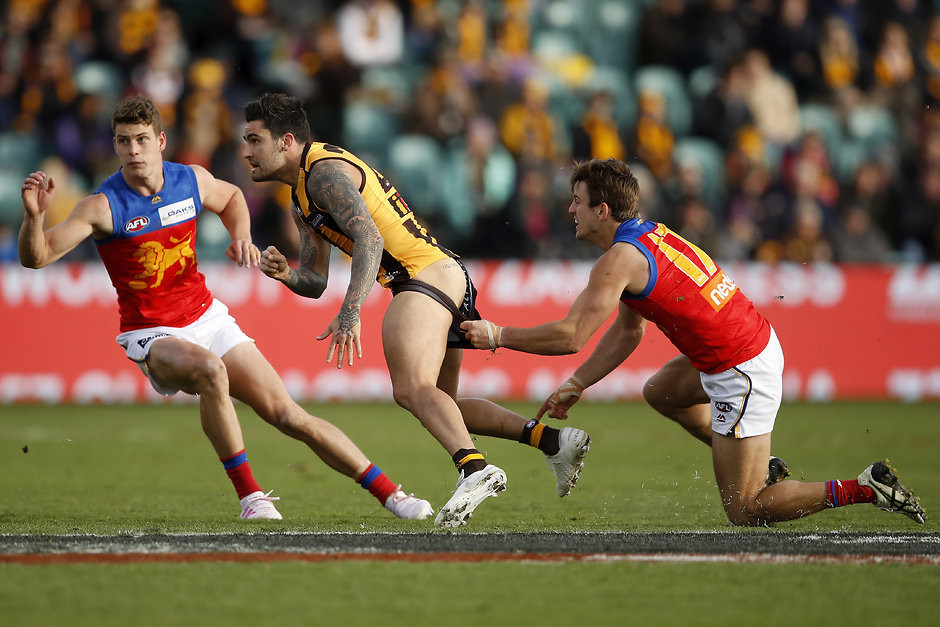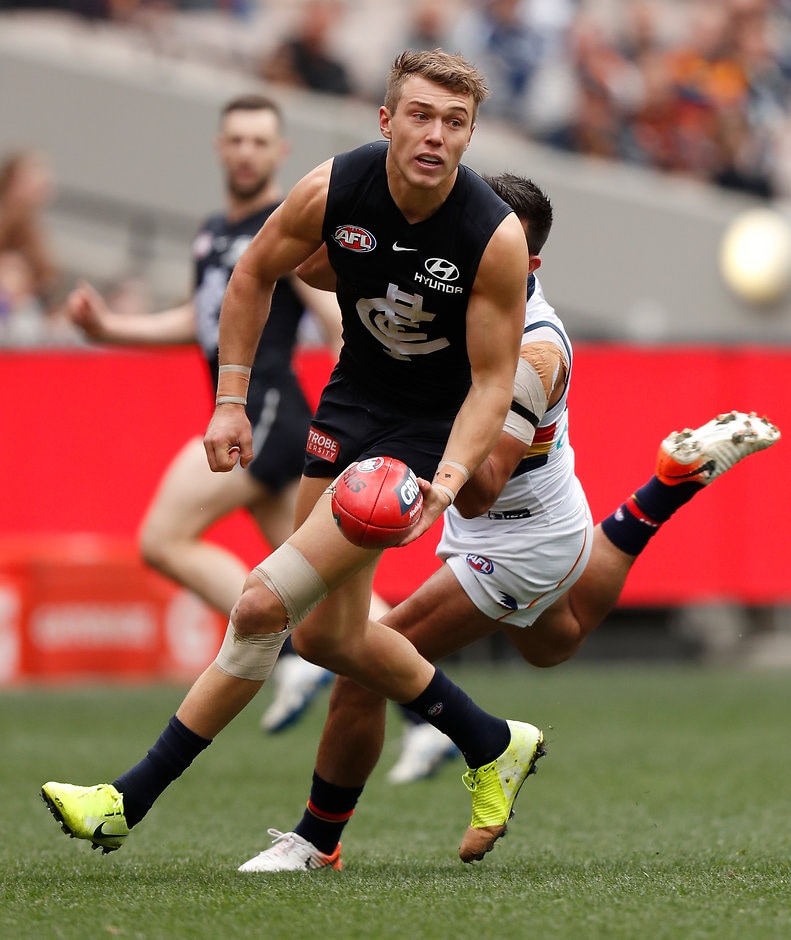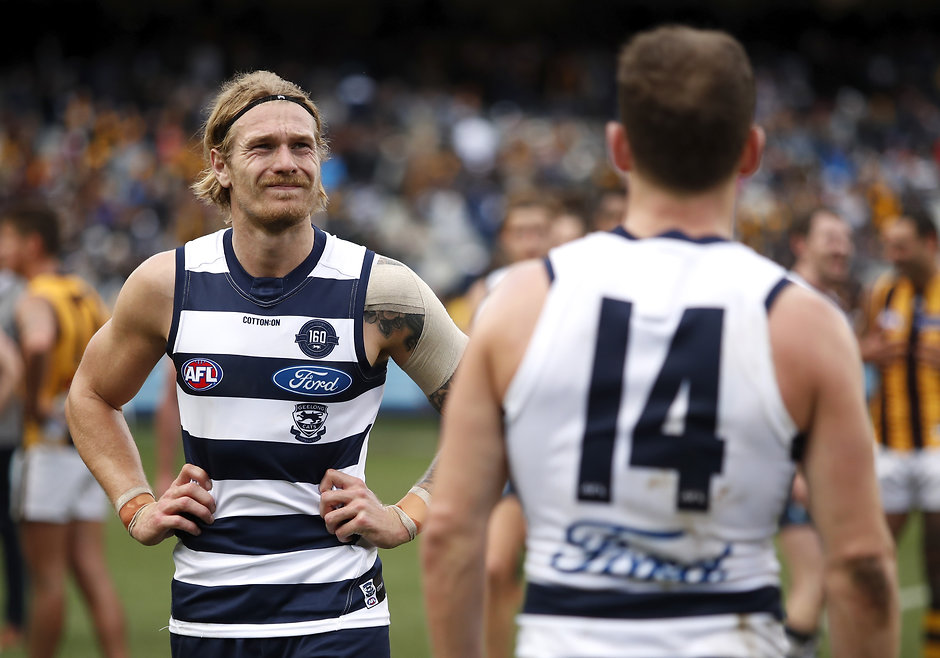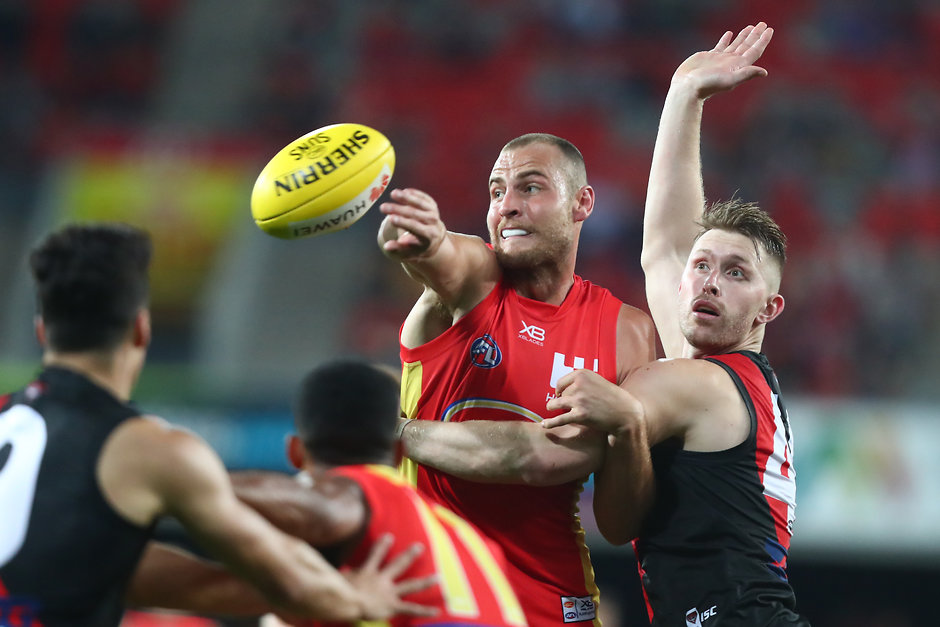THERE is any number of reasons to be impressed with Brisbane's extraordinary transformation this year into a premiership contender.
However, chief among them during the Lions' six-match winning march since the bye might be the different ways they can beat the opposition.
They have an argument to be considered the AFL's most versatile team.
What. A. Goal. Hugh McCluggage! #AFLLionsNorth pic.twitter.com/3WHx9e4LCn
— AFL (@AFL) July 20, 2019
Saturday's victory over Hawthorn was the latest case, with Alastair Clarkson's in-form Hawks having more of the Sherrin, boasting 15 extra inside 50s, winning the territory battle and scoring more from stoppages.
That is usually a recipe for disaster for the other team – and it may have been for Brisbane had Hawthorn been more accurate than its 7.18 scoreline, as Lions coach Chris Fagan noted post-game.
Even then, the Lions still had to find a way.
The defensive-minded Hawks strangled Brisbane enough to keep it to 40 inside 50s for the afternoon, yet Fagan's men broke the match open with excellent efficiency.
They scored 5.1 from eight inside 50s in the third quarter and tackled Hawthorn's zone with, in part, more long kicks than the norm and went the wing route out of defensive 50 more often.
The Hawks had their pants pulled down by a more efficient Lions outfit. Picture: AFL Photos
Brisbane also adapted well to Launceston's University of Tasmania Stadium, where it has won consecutive matches over the Hawks.
"Our method of play on grounds like this, in conditions like this, is probably fairly effective," Fagan said.
"We finished up with about 600 more metres gained (than Hawthorn), even though we had less possession."
The table below illustrates how difficult it is to plan for the Lions, given they aren't wed to one way of moving the ball, although they are a high-kicking, low-handballing side.
OPPONENT | KICK-TO-H'BALL RATIO | KICK LONG % | CORRIDOR (FROM D50) | WING (FROM D50) | BOUNDARY (FROM D50) |
St Kilda, round 14 | 2.27 | 30.8% | 10.6% | 31.9% | 57.4% |
Melbourne, round 15 | 1.62 | 42.3% | 26.2% | 20% | 53.8% |
GWS Giants, round 16 | 2.21 | 34.7% | 12.8% | 21.3% | 66% |
Port Adelaide, round 17 | 2.14 | 38.3% | 20% | 32% | 48% |
North Melbourne, round 18 | 2.18 | 43.6% | 13.9% | 36.1% | 50% |
Hawthorn, round 19 | 1.95 | 46.9% | 12% | 40% | 48% |
That victory over the Demons was noteworthy in this discussion, too.
Brisbane monstered Melbourne in the contest, which enabled it to attack through the corridor more and pile on huge points from this source.
THE RUN HOME Can free-falling Crows save their season?
Almost 31 per cent of the Lions' scoring chains that day started from the centre bounce, a figure more than double any other game in this current streak.
It contrasted wildly with Brisbane's triumph over Greater Western Sydney the following week, when the Giants gave the Lions a caning in the same area – forcing them to again find another way.
OPPONENT | FORWARD 50 | ATTACKING MIDFIELD | CENTRE BOUNCE | DEFENSIVE MIDFIELD | DEFENSIVE 50 | SCORE PER In50 | GOAL PER In50 |
St Kilda, round 14 | 30.4% | 33.9% | 7% | 21.7% | 7% | 48.4% | 27.4% |
Melbourne, round 15 | 15% | 37.4% | 30.8% | 2.8% | 14% | 50.8% | 23.8% |
GWS Giants, round 16 | 36.2% | 14.9% | 1.1% | 26.6% | 21.3% | 49% | 28.6% |
Port Adelaide, round 17 | 28.9% | 24.7% | 14.4% | 24.7% | 7.2% | 49.1% | 25.5% |
North Melbourne, round 18 | 35.6% | 17.2% | 10.3% | 16.1% | 20.7% | 40.3% | 17.9% |
Hawthorn, round 19 | 23% | 39.1% | 13.8% | 20.7% | 3.4% | 55% | 32.5% |
The Lions have consistently been strong in scoring from intercepts in general and in the forward half, where they've typically – bar the Hawthorn exception – worn teams down with repeat entries.
Their ability to punish GWS turnovers, along with a four-goal-to-one opening term, was crucial to them running out 20-point winners at Giants Stadium.
Fagan told reporters afterwards: "We find a way to score."
Find Trends on Apple Podcasts, Google Podcasts and Spotify
The ideal scenario for Brisbane, like most teams, is to crush the opposition in groundball and stubbornly refuse to let the ball out of its forward half.
But unlike the majority of sides, these Lions have a Plan B, C, and D – and a brand of football that stands up in adversity.
STATISTIC | ST KILDA, R14 | MELBOURNE, R15 | GWS GIANTS, R16 | PORT ADELAIDE, R17 | NORTH MELBOURNE, R18 | HAWTHORN, R19 |
Disposals | +34 | -24 | -41 | -54 | -9 | -30 |
Contested possessions | +27 | +27 | -25 | -3 | +29 | +2 |
Inside 50s | +22 | +4 | -9 | +1 | +24 | -15 |
Time in forward half | +13:24 | +11:12 | +0:26 | +5:03 | +15:45 | -12:22 |
Points from forward-half possession gains | 46 | 37 | 28 | 25 | 27 | 45 |
Points from stoppages | +8 | +40 | -11 | +23 | -3 | -7 |
Points from centre bounces | -5 | +32 | -18 | +1 | +2 | +7 |
Points from intercepts | +47 | +12 | +32 | +26 | +21 | +33 |
Hitouts to advantage | +3 | +2 | -3 | +9 | 0 | -7 |
* All differentials, except points from forward-half possession gains
Salmon mystery clouds Cripps achievement
Did he, or didn't he?
Champion Data's number-crunchers say Carlton superstar Patrick Cripps most certainly did.
Cripps' career game in the Blues' third straight victory included him amassing an astonishing 19 clearances, matching ex-Demon Brent Moloney's effort against Adelaide in 2011.

Where the conjecture comes in is whether that pair are the equal record-holders or not.
NINE THINGS WE LEARNED The 45-goal Tiger who's made for finals
Ruck-forward Paul Salmon, an Essendon star then playing for Hawthorn, has long been credited with 22 clearances in a round 13 clash with North Melbourne in 1998.
However, 'unofficial' Champion Data records state Salmon had only 18 clearances that afternoon rather than 22.
There's no doubting Cripps' position among clearance leaders through 97 matches.
Hawks in rare company with scoring famine
Hawthorn's scoring woes throughout season 2019 are well documented, most commonly by coach Alastair Clarkson.
The Hawks are yet to post a triple-digit tally despite an encouraging run of recent form, which was instead based upon their defensive prowess.
There is still a chance Hawthorn will avoid joining the other three teams this century to fail to score 100 points in a game for a whole season.
FANTASY FORM WATCH A blast from the past
The best opportunity seems to be in the penultimate round against struggling Gold Coast, which has conceded 100-plus points six times, including 150 or more in rounds 16 and 17.
CLUB | YEAR | WINS |
Hawthorn* | 2019 | Eight |
Carlton | 2017 | Six |
Melbourne | 2014 | Four |
Gold Coast* | 2019 | Three |
Carlton | 2018 | Two |
* Season isn't over
Cat, Sun chasing history
Geelong defender Tom Stewart and Gold Coast ruckman Jarrod Witts are on track for all-time finishes in rebound 50s and hitouts this season.
Stewart, a first-time All Australian last year, is averaging more than eight rebound 50s in 2019 and has 146 in total, putting him on pace to match ex-Pie James Clement's sixth-ranked 179 from 2005.
The gun Cat will have the benefit of at least two finals as well, giving him a chance at threatening Essendon great Dustin Fletcher's record of 206 in the 2004 season.

Witts is trying to become the fourth player to accumulate 1000 hitouts in a season, something only Max Gawn (1119), Todd Goldstein (1058) and Brodie Grundy (1038) have managed.
They all had the benefit of their sides playing finals, whereas Witts won't.
The Suns co-captain is on 815 with a month left, with his average of 45.3 hitouts superior to the aforementioned three ruck stars' in their respective campaigns.

Lyin' Lyon or just misinformed?
Fremantle coach Ross Lyon declared post-match the Western Bulldogs were on "world record pace" for kicks at half-time of their thumping win over his Dockers.
In reality, the Dogs' 131 kicks in the first two quarters on Sunday – Lyon quoted them having 140 – were only the 13th-most this season before half-time.
They had 37 more than Freo at that stage, the seventh-largest differential in a first half this year.
Journalists should know by now not to trust coaches in these circumstances, and this is further proof.




